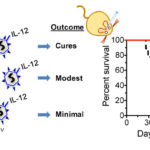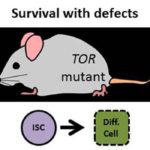Tag Archives:tumor
Curing glioblastoma with oncolytic virus and immune checkpoint blockade
Tumors of the pituitary and headache: Will it get better after surgery?
The mechanisms of MCP-1 production in tumor microenvironments: Tumor cells are not home alone
Osteosarcoma – lost in translation
Pedophilia emerging in a 64 years old pediatrician
Microfluidic tumor models help pre-clinical screening of T cell cancer immunotherapies
Is the best cancer offense a good defense?
Lessons learned from the study of non-cancerous meningioma tumors
A new test to select more effective treatments for lung cancer
Sadly, the majority of patients with Lung Cancers who cannot be treated by surgery to remove their tumour, die within a few years. Small numbers are beginning to benefit from chemotherapies which target very specific types of
Less is more for staging vaginal cancer
Criteria for predicting the survival of women with vaginal cancer has been established by physician specialists trained in treating gynecologic cancers in the United States and around the world. The current 5-year overall survival is approximately 74%
Tumor risk from low-dose radiation exposures with the example of dental diagnostic X-ray
It was reported that exposure to dental diagnostic X-rays in oral, dental and maxillofacial care increases the risk of benign tumors (meningioma), but not of malignant brain tumors (glioma). Malignant gliomas grow more rapidly. Meningioma, a benign
Atomic classification of cancer cells
A “TORgeted” way to heal the gut
Fluorescent carbon dots integrated hydrogels for lung cancer therapy
Nanoscintillators: magic internal light sources to assist radiotherapy
Is our immune system mistaking tumours for foetuses?
Tumours are abnormal growths of tissue where cells produced by the body get out of control and divide at a rapid and unregulated pace. And – when you think about it – embryos too are masses of
Improving nature’s own communication system to fight cancer
Heat shock protein as a novel druggable target in angiogenesis?
Emergency department presentation predicts poor outcomes after meningioma removal
A meningioma is one of the most common forms of a brain tumor. Unlike many other types of brain tumors, meningiomas are typically associated with relatively favorable outcomes even when they require surgical treatment. In the past




















